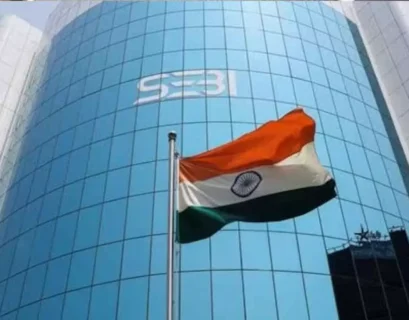India’s economy has witnessed significant growth over the years, and the country’s stock market plays a crucial role in driving its economic development. The National Stock Exchange (NSE) and Bombay Stock Exchange (BSE) are the two major stock exchange in India that facilitate the trading of stocks and other financial instruments. In this article, we will delve into the functioning, history, and significance of NSE and BSE, shedding light on what you need to know about these vital institutions in India’s financial landscape.
I. Understanding NSE:
A – Introduction to NSE:
The National Stock Exchange (NSE) was established in 1992 and is headquartered in Mumbai. It is the leading stock exchange in India and is known for its cutting-edge technology, robust infrastructure, and transparent trading practices. NSE has emerged as a preferred platform for both retail and institutional investors due to its efficiency and reliability.
B – Key Features and Offerings:
-
Equity Trading:
NSE provides a platform for trading in equities of companies listed on its exchange. It facilitates buying and selling of major stocks exchange through its electronic trading system, which ensures transparency, speed, and accuracy in trade execution.
-
Derivatives Trading:
NSE is renowned for its derivatives segment, where instruments like futures and options are traded. These financial instruments derive their value from an underlying asset, such as stocks or indices. NSE’s derivatives market offers opportunities for hedging, speculation, and arbitrage, attracting a wide range of market participants.
-
Indices:
NSE is responsible for calculating and maintaining various market indices, including the Nifty 50 and Nifty Bank. These indices serve as benchmarks for the performance of the Indian major stock exchange and help investors track the overall market sentiment and trends.
-
Clearing and Settlement:
NSE operates a robust clearing and settlement system to ensure secure and efficient trade settlement. It follows a T+2 settlement cycle, where transactions are settled within two working days from the trade date.
II. Unveiling BSE:
A – Introduction to BSE:
The Bombay Stock Exchange (BSE) is one of the oldest stock exchanges in Asia, dating back to 1875. It is in Mumbai and has played a significant role in shaping India’s capital markets. BSE is known for its rich history, diverse listings, and strong investor base.
B – Key Features and Offerings:
-
Equity Trading:
BSE provides a platform for trading in equities, similar to NSE. It facilitates the buying and selling of stocks through its electronic trading system, ensuring fair and transparent price discovery.
-
Derivatives Trading:
BSE also operates a derivatives segment, offering futures and options contracts on various underlying assets. Investors can participate in derivative trading on BSE to manage risk, speculate, or engage in arbitrage opportunities.
-
Indices:
BSE is home to the Sensex, one of India’s most widely followed stock market indices. Sensex comprises 30 actively traded stocks, representing diverse sectors of the Indian economy. It serves as a barometer of the overall market performance and is closely tracked by market participants.
-
Clearing and Settlement:
BSE, like NSE, operates a robust clearing and settlement system to ensure the smooth execution of trades. It follows a T+2 settlement cycle, ensuring timely and efficient settlement of transactions.
III. Key Differences between NSE and BSE:
While NSE and BSE are both crucial players in India’s major stock exchange, several differences set them apart. Understanding these distinctions can help investors make informed decisions when participating in the Indian capital markets.
1. Ownership and Governance:
NSE is owned by a set of leading financial institutions, including banks, insurance companies, and other financial intermediaries. On the other hand, BSE is a corporatized and demutualized exchange, with shares listed on its own platform. This difference in ownership structure affects the governance and decision-making processes of the exchanges.
2. Market Share and Trading Volumes:
In recent years, NSE has gained a significant market share and has emerged as the dominant exchange in terms of trading volumes. Its advanced technology, wider product range, and focus on investor-friendly practices have contributed to its popularity. However, BSE still retains a loyal investor base and is known for its long-standing presence in the Indian capital markets.
4. Index Composition:
NSE’s flagship index is the Nifty 50, which comprises 50 actively traded stocks representing different sectors. In contrast, BSE’s Sensex consists of 30 stocks, and the selection criteria differ slightly from that of Nifty 50. The variation in index composition can lead to differences in performance and sector representation.
IV. Significance of NSE and BSE:
1. Market Depth and Liquidity:
NSE and BSE collectively provide liquidity to the Indian stock market. Market depth refers to the volume of buy and sell orders available for a particular stock or instrument at different price levels. The presence of multiple exchanges enhances market depth, allowing investors to buy or sell securities at competitive prices.
2. Price Discovery and Transparency:
Both NSE and BSE contribute to the price discovery process, reflecting the true value of stocks and other financial instruments. Transparent trading practices, real-time dissemination of information, and fair order matching mechanisms ensure that prices are determined efficiently and accurately.
3. Investor Participation and Wealth Creation:
NSE and BSE have opened avenues for investors to participate in the growth of Indian companies. By buying shares or trading derivatives, investors can benefit from the performance of these companies and potentially create wealth over time. The exchanges provide a platform for capital formation, enabling businesses to raise funds for expansion and development.
V. Regulatory Framework and Oversight:
1. Securities and Exchange Board of India (SEBI):
The Securities and Exchange Board of India (SEBI) is the regulatory authority responsible for overseeing the functioning of both NSE and BSE, as well as other participants in the Indian securities market. SEBI’s primary role is to protect the interests of investors, ensure fair market practices, and promote the development of the securities market.
2. Listing Requirements and Compliance:
Both NSE and BSE have specific listing requirements that companies must fulfill to be listed on their exchanges. These requirements include financial criteria, corporate governance standards, and adherence to disclosure norms. Listed companies are also required to comply with periodic reporting and disclosure obligations to ensure transparency and accountability.
3. Market Surveillance and Investor Protection:
SEBI, in collaboration with NSE and BSE, employs robust market surveillance mechanisms to detect and prevent market manipulations, insider trading, and other fraudulent activities. This helps in maintaining market integrity and safeguarding investor interests. SEBI also regulates intermediaries such as brokers, depository participants, and clearing corporations to ensure fair and ethical practices in the securities market.
VI. Technology and Innovation:
1. Electronic Trading Platforms:
Both NSE and BSE have embraced technology-driven trading platforms, enabling investors to trade electronically without the need for physical presence on the trading floor. These electronic trading systems provide real-time market data, order placement, and trade execution facilities, enhancing efficiency, speed, and accessibility for market participants.
2.High-Frequency Trading and Algorithmic Trading:
The adoption of technology has also led to the rise of high-frequency trading (HFT) and algorithmic trading on NSE and BSE. HFT refers to the use of advanced algorithms and high-speed infrastructure to execute many trades within milliseconds. Algorithmic trading involves the use of predefined rules and algorithms to automate trading decisions. These technological advancements have brought liquidity and efficiency to the market but also raised concerns regarding market stability and fairness.
VII. Global Integration and Investor Access:
1. Foreign Institutional Investors (FIIs) and Foreign Portfolio Investors (FPIs):
NSE and BSE have witnessed increased participation from foreign institutional investors and foreign portfolio investors in recent years. FIIs and FPIs are allowed to invest in Indian securities within regulatory limits set by SEBI. This integration with global investors has contributed to the liquidity and depth of the Indian capital markets.
2. Depository Receipts (DRs):
NSE and BSE also facilitate the trading of depository receipts, such as American Depository Receipts (ADRs) and Global Depository Receipts (GDRs). These instruments enable foreign companies to raise capital from international investors and provide investors with exposure to foreign companies’ shares.
VIII. Market Developments and Future Outlook:
1. Introduction of New Products and Instruments:
Both NSE and BSE continuously strive to introduce new products and instruments to cater to evolving investor needs. For instance, NSE has introduced products like Exchange-Traded Funds (ETFs), Real Estate Investment Trusts (REITs), and Infrastructure Investment Trusts (InvITs) to diversify investment options.
2. Emphasis on Corporate Governance and Transparency:
In recent years, there has been a greater focus on corporate governance and transparency in the Indian securities market. NSE and BSE have implemented stricter disclosure norms, enhanced surveillance mechanisms, and improved investor protection measures to strengthen market integrity and foster investor confidence.
3. Technological Advancements:
NSE and BSE are likely to continue investing in technological advancements to enhance trading efficiency, reduce latency, and expand their product offerings. Technologies like blockchain and artificial intelligence may also find applications in areas such as settlement, record-keeping, and risk management.
Bottom Line
NSE and BSE are the backbone of India’s capital markets, facilitating the trading of major stocks exchange and other financial instruments. Their technological advancements, robust infrastructure, and transparent trading practices have attracted a wide range of investors. Understanding the functioning and significance of NSE and BSE is crucial for anyone looking to participate in India’s dynamic and vibrant stock market. By demystifying these exchanges, investors can make informed decisions and navigate the complexities of India’s financial landscape with confidence.
Visit CurrencyVeda for comprehensive information on major stock exchange, trading, and investment strategies. Expand your knowledge and make informed decisions in the financial markets. Explore now!








